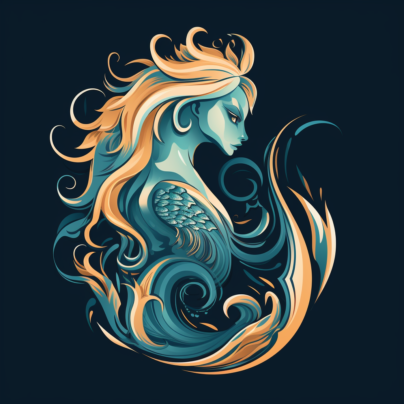Pterosaur, “Dimorphodon — Twin-Toothed Terror of the Cliffs”
“With a bat’s wings, a lizard’s body, and a mouthful of nightmare teeth, the Dimorphodon dives from prehistoric skies to rip through flesh with a bite built for two!”

The Dimorphodon is a compact but unsettling aerial creature, roughly the size of a large hound with a wingspan of five feet. Its frame is wiry and muscular, built for sudden bursts of power rather than sustained flight. Its leathery wings are bat-like, the membranes stretched between elongated finger bones. The most disturbing feature is its oversized skull—nearly one-third of its body length—broad and deep with an unnatural, boxy silhouette.
Rows of mismatched teeth jut from its powerful jaws: needle-like incisors at the front for seizing prey, and broader, crushing molars in the back. The contrast gives the creature a deranged grin. Its eyes are large, forward-facing, and shimmer with uncanny intelligence. Sparse feathers or quill-like filaments sometimes line its neck or shoulders, suggesting an ancient link to warmer-blooded kin.
Behaviour
Dimorphodons are cunning, solitary hunters that prefer to strike swiftly and vanish. They do not soar gracefully; instead, they take to the air in short, explosive flaps, using gravity and surprise to their advantage. Opportunistic and curious, they are known to test boundaries, peck at shiny objects, or probe campsites after dusk.
When threatened, a Dimorphodon emits a high-pitched, rattling shriek—both a warning and a signal to any nearby mates or rivals. If cornered, it fights with brutal precision, aiming for eyes, necks, or exposed tendons. It is surprisingly agile on land, able to scramble and leap with terrifying speed.
Habitat
Dimorphodons favor coastal cliffs, misty jungles, and dense, rocky woodlands—any terrain where vertical space can be exploited. They nest in hard-to-reach crevices, often overlooking water sources or animal trails. Though primarily active during twilight hours, they have been known to emerge in daylight during overcast weather or under canopy cover.
Modus Operandi
Preferring ambush over pursuit, a Dimorphodon will often cling to cliff walls or perch motionless in trees, waiting for prey to pass beneath. It drops down in near silence, wings snapping open only in the final second, using its weight to slam into the target. The creature then bites and tears, using its dual-tooth arrangement to pierce hide and crush bone with equal efficiency.
It avoids prolonged combat, favoring swift, decisive attacks followed by retreat. In groups—rare but documented—Dimorphodons will coordinate aerial strikes, one acting as a decoy while others swoop in to feed.
Motivation
The Dimorphodon is driven by hunger, territory, and survival instinct. It does not kill for sport, but it will defend its roost or feeding ground with unyielding aggression. Young Dimorphodons are raised alone, making each specimen highly territorial and suspicious by nature.
Some scholars speculate that they possess a rudimentary memory—Dimorphodons have been observed avoiding specific traps or locations after only a single encounter, suggesting a learning capacity uncommon in lesser monstrosities.
“Its teeth are many. Its mercy, none.”
—Inscription from a cliffside hermit’s journal, last known entry
Dimorphodon 5e
Dimorphodon, Pathfinder 1st
Dimorphodon
Small Beast, Unaligned
Armor Class 14 (natural armor)
Hit Points 27 (6d6 + 6)
Speed 30 ft., climb 30 ft., fly 50 ft.
| STR | DEX | CON | INT | WIS | CHA |
|---|---|---|---|---|---|
| 10 (+0) | 16 (+3) | 12 (+1) | 2 (–4) | 13 (+1) | 5 (–3) |
Saving Throws Dex +5, Wis +3
Skills Perception +3, Stealth +5
Senses darkvision 60 ft., passive Perception 13
Languages —
Challenge 1 (200 XP)
Proficiency Bonus +2
Traits
Ambush Flier.
If the Dimorphodon moves at least 20 feet straight toward a creature and then hits it with a Dive Attack, the target must succeed on a DC 13 Strength saving throw or be knocked prone.
Two-Form Teeth.
The Dimorphodon has two types of bite damage. On a hit with its bite, roll a d6:
- 1–3: Piercing damage
- 4–6: Bludgeoning damage
If the bludgeoning bite hits a creature wearing non-magical armor, that creature must succeed on a DC 11 Constitution saving throw or have disadvantage on the next Strength check or save it makes before the end of its next turn.
Skulking Predator.
The Dimorphodon has advantage on Stealth checks made in rocky, forested, or coastal terrain. While motionless, it is indistinguishable from natural surroundings (DC 15 Wisdom [Perception] to spot).
Actions
Multiattack.
The Dimorphodon makes two attacks: one with its Bite, and one with its Talons.
- Bite. Melee Weapon Attack: +5 to hit, reach 5 ft., one target.
Hit: 6 (1d8 + 2) piercing or bludgeoning damage (see Two-Form Teeth). - Talons. Melee Weapon Attack: +5 to hit, reach 5 ft., one target.
Hit: 5 (1d6 + 2) slashing damage. - Dive Attack (Recharge 5–6).
The Dimorphodon flies up to half its flying speed in a line toward a target and makes a Bite attack at the end of the movement. On a hit, it deals an additional 2d6 damage, and the target must succeed on a DC 13 Dexterity saving throw or be blinded until the end of its next turn (from eye trauma or debris impact).
Bonus Actions
Cunning Flap.
The Dimorphodon can take the Disengage or Hide action as a bonus action if it is within 10 feet of a wall, tree, or cliff.
Reactions
Startling Screech (1/Day).
When the Dimorphodon is hit by an attack or a creature moves within 10 feet of it, it can emit a sudden shriek. Each creature within 10 feet must make a DC 11 Constitution saving throw or have disadvantage on opportunity attacks until the start of their next turn.
Dimorphodon
Dimorphodon – A brightly colored creature swoops down to land on the branch above. Its head is overly large, with a mouth full of sharp teeth and bright, shiny eyes. The thing chirps, lashes its long thin tail, and then with a flap of leathery wings is in the air once again.
[This content was created by Paizo Publishing LLC for the Pathfinder rules but is not from the Pathfinder RPG product line.]
Pterosaurs are often found in regions where dinosaurs and other prehistoric creatures are commonly encountered, yet they are not dinosaurs themselves. The pteranodon is the most well known and widespread of these flying reptiles, but numerous other species exist, such as the relatively small rhamphorhynchus, the venomous dimorphodon, and the lumbering, giraffe-sized quetzalcoatlus. While the larger pterosaurs are awkward fliers, the smaller ones can be quite agile and quick. Pterosaurs generally dwell on coastlines, along rivers, or near swamps or lakes, for the majority of their diet consists of fish snatched from the water in daring dives. Pterosaurs are quite territorial, though, and most won’t hesitate to swoop down and hiss, shriek, and attack things their size or larger.
The dimorphodon is a robust pterosaur with a distinctively large skull yet numerous hollows in the skull keep the creature’s weight rather low and allow it greater agility. The dimorphodon’s jaws contain two separate rows of differently shaped teeth: several larger fangs near the front (which are used to grip prey and inject poison) and a much larger number of smaller, sharp teeth along the rest of the jaw (used to cut through flesh).
This unusual combination of different teeth is why in some areas the dimorphodon is known as the fangbird or the vampire lizard, although they dont actually drink blood. Dimorphodons normally feed on fish, small reptiles, and birds, but when particularly hungry, flocks of these creatures have been known to gang up on larger prey, swooping in to bite and then retreating to watch from nearby cliff ledges or tree branches while the victim slowly succumbs to the poison. Once the creature is rendered helpless, the flock descends to eat its victim alive.
Dimorphodons are particularly easy to train, and they’re often used as guardians by local tribes or kept as exotic pets in larger cities. A Handle Animal check to train a dimorphodon is made with a +4 bonus, and a dimorphodon can know one bonus trick of its trainer’s choice once it is fully domesticated.
| Dimorphodon CR 1 |
| XP 400 N Medium animal Init +3; Senses Low-Light Vision, Scent; Perception +5 |
| DEFENSE |
| AC 14, touch 13, flat-footed 11 (+3 Dexterity, +1 natural) hp 11 (2d8+2) Fort +4, Ref +6, Will +1 |
| OFFENSE |
| Speed 10 ft., Fly 30 ft. (average) Melee bite +3 (1d6+3 plus poison) |
| STATISTICS |
| Strength 14, Dexterity 17, Constitution 12, Intelligence 2, Wisdom 13, Charisma 12 Base Atk +1; CMB +3; CMD 16 Feats Flyby Attack Skills Fly +7, Perception +5 |
| SPECIAL ABILITIES |
| Poison (Ex) Bite – injury; save Fort DC 12; frequency 1/round for 4 rounds; effect 1d2 Strength; cure 1 save. |
| ECOLOGY |
| Environment warm coastline or forest Organization solitary, pair, or flock (3-9) Treasure none |
Dimorphodon Companions
Starting Statistics
Size Small; AC +1 natural armor; Speed 10 ft., fly 30 ft. (average); Attack bite (1d4);
Ability Scores Strength 10, Dexterity 19, Constitution 10, Intelligence 2, Wisdom 13, Charisma 12; Special Qualities Low-Light Vision, Scent. 7th-level
Advancement
Size Medium; Attack bite (1d6); Ability Scores Strength 14, Dexterity 17, Constitution 12; Special Qualities poison.
Section 15: Copyright Notice – Pathfinder Adventure Path #37: Souls for Smuggler’s Shiv
Pathfinder Adventure Path #37: Souls for Smuggler’s Shiv. © 2010, Paizo Publishing, LLC; Author: James Jacobs.

 Buy me a coffee
Buy me a coffee